Review: BlackBerry KEYone
May 4, 2017, 8:00 AM by Eric M. Zeman
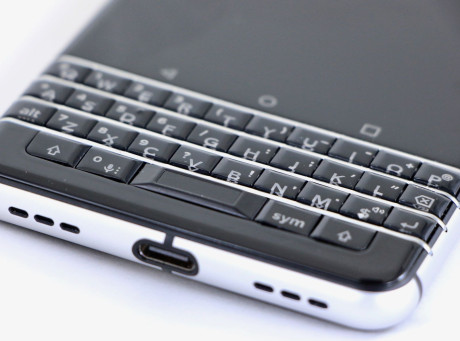
The KEYone is made by TCL and it runs Google's Android operating system, but this phone clearly has the heart and soul of a BlackBerry beating within. BlackBerry and TCL designed the KEYone together to ensure it offers the best from BlackBerry, TCL, and Google. With a physical QWERTY keyboard at your disposal, feel free to get your emailing and messaging on while enjoying epic battery life and powerful performance. Here is Phone Scoop's in-depth review of the BlackBerry KEYone.
Hardware
Is It Your Type?
The BlackBerry KEYone targets a very specific type of user: business folk who need a secure handset with powerful messaging features and prefer typing on real keys instead of glass. The KEYone purports to offer the best of both worlds: a big touchscreen and a physical QWERTY keyboard for the ultimate in input. If you're pining for the BlackBerry days of old and miss real buttons when typing out those mobile emails, the KEYone has you covered.
Body
Last year, BlackBerry partnered with TCL, the parent company of Alcatel, and kicked out the DTEK50 and DTEK60 smartphones. Neither of these was entirely new; instead, they were rebranded variants of Alcatel's Idol 4 and 4s, respectively. The phones used TCL's hardware, but ran BlackBerry's secured version of Android along with its enterprise-class email, messaging, and communications tools. The KEYone is an altogether different animal.
BlackBerry and TCL worked on the KEYone together from the start, which means it is a unique handset and not a retread of some older phone. BlackBerry hopes the KEYone will offer the right blend of hardware and software to appeal to its core customer base, businesses and governments.
The KEYone merges the design heritage from the BlackBerry of old with modern materials and aesthetics. The KEYone carries over BlackBerry's signature chrome frets on the keyboard and black, patterned rear panel. These are features BlackBerry fans will be sure to appreciate. The plain metal frame and black exterior components are conservative to a fault, though the phone still manages to put forth some personality. For example, the left, bottom, and right edges are all curved while the top edge is perfectly flat. In fact, the phone can do a headstand on a level surface, something not many modern phones can lay claim to. It lends the phone a unique industrial look.
The KEYone looks a lot bigger than it really is. For example, it's significantly smaller than the iPhone 7 Plus and Pixel XL. However it looks like an absolute brick when set next to the smaller Galaxy S8. What bugs me most is the phone's thickness: it measures 9.4mm thick, which is 1-2 mm more than many of today's better phones.
The rounded profile and rubbery rear panel contribute to what I'd call a nice in-hand experience. I think most people will be able to use the phone comfortably, though those with the smallest hands may find themselves using both. It can be hard to reach the top of the screen without adjusting your grip. The phone travels well enough in your pocket, yet the thickness and flat top surface (with hard edge) make it noticeable in tighter clothing.
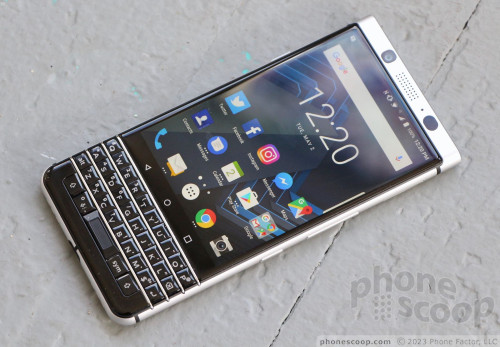
I'd call the materials and fit-and-finish of the phone good. It can't quite compete with today's top phones, but it's probably not trying to. The aluminum frame that forms most of the KEYone's exterior has a slightly grainy finish. The KEYone's body consists of a good number of small pieces assembled together, with glass and plastic on front, plastic on the back, and black antenna lines slicing across the metal chassis pieces. The antenna lines, unlike those on most phones, are a bit gritty and not fitted into the frame seamlessly. This leaves it feeling roughshod. The KEYone is hefty and strong, and yet I can't help but feel the phone could be a bit more refined.
The KEYone's face is a busy place. It's mostly black, though metal and chrome accents help break up the blackness a bit. The display glass takes up only about two-thirds of the front surface and is curved pleasingly along the side edges. The phone's forehead has an obvious user-facing camera, grille for the earpiece, and sensor array. BlackBerry and TCL opted for capacitive controls (back, home, multitask) for the phone, which are tucked between the display itself and the physical QWERTY keyboard.
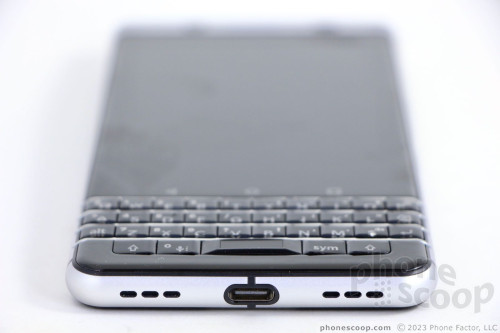
BlackBerry keyboard aficionados should be relatively pleased with the keyboard. They keys are black and each row is separated by BlackBerry's signature chrome frets. I found the keyboard was easy to reach and use with a single thumb, but it's most effectively put to use with both thumbs at the same time. The individual buttons have minimal shaping to them and feel like they are covered in gel. Travel and feedback of the keys are decent, as each produces a pleasing click when pressed. The whole thing feels a little squished at first, though I was able to adjust to its size quickly enough. In addition to letter keys, there are dedicated buttons for delete, return, alt, caps, symbols, and voice dictation.
The space bar is by far the largest button with the biggest profile because it doubles as the fingerprint reader. I don't like travel and feedback as much; it feels mushier and cheaper than the other keys. Last, like the BlackBerry Priv, the entire keyboard acts as a mouse. You can swipe your thumb across the keys to move the cursor around on the screen, select text, browse through your photo album, and more. After some practice, this function works well.
A single button adorns the KEYone's left edge: the lock key. The placement drives me nuts; it's too high up on the side. I found it hard to reach and use. (This issue is common with Alcatel phones.) The button has a decent profile and good travel/feedback. What makes this so frustrating is that the user-assignable BlackBerry key is on the right edge, exactly where you expect the screen lock button to be. I can't tell you how many times I pressed the BlackBerry button looking to unlock the phone. BlackBerry and Alcatel have this backwards as far as I am concerned. The BlackBerry button has a decent profile, and feedback is pretty good. The volume toggle, also on the right edge, is a bit flat and mushy for my tastes.
The bottom edge of the phone holds the USB-C port and it is flanked by large holes for the speakerphone. I'm happy to see USB-C on this phone. The dual-purpose SIM / memory card tray is tucked into the KEYone's right edge. A paperclip ejects it easily enough. The tray is made of metal and comes across as strong. Music lovers will be happy to learn the KEYone includes a standard 3.5mm headset jack. It's located in the far left corner of the top edge. Confusingly, the flat top edge looks like it is removeable thanks to a large plastic piece and small hole that appears to accommodate a SIM card tool. In fact, this hole is a microphone. If you stick the SIM card tool in it, which I'm afraid many people are likely to do, you'll damage the microphone. BlackBerry / TCL need to place some sort of warning or sticker on the phone.
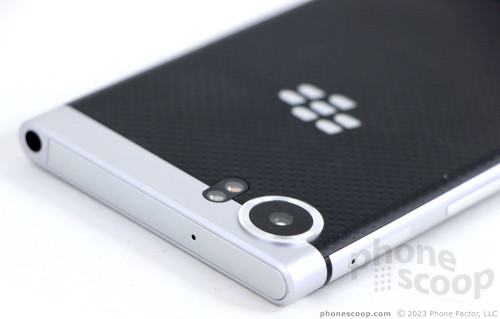
The camera module is absolutely huge and protrudes quite a bit. The module is about the size of a nickel. A two-tone flash is just off to the right. The remainder of the rear surface is formed by a polycarbonate panel with a dimpled, soft-touch texture. It's a classic BlackBerry look, though leather, pleather — or even vinyl — might have been even better. The BlackBerry logo is stamped into the rear panel in chrome. It's eye-catching, to say the least. The rear panel is attached firmly and the battery is inaccessible.
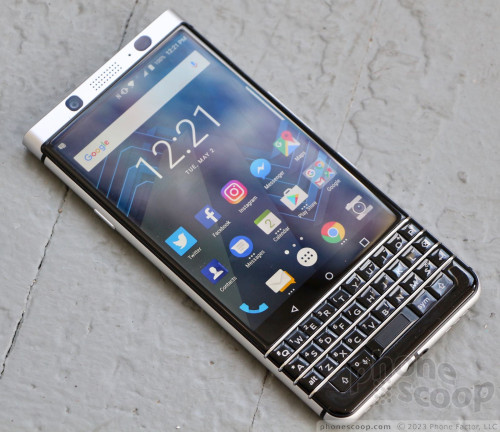
I'm a bit disappointed the KEYone isn't waterproof.
Adding a physical keyboard to a modern smartphone may seem like a throwback, and it certainly introduces some compromises, such as a smaller screen. Those who prefer a more tactile typing experience to sliding their finger around on glass may appreciate what BlackBerry and TCL are offering in the KEYone.
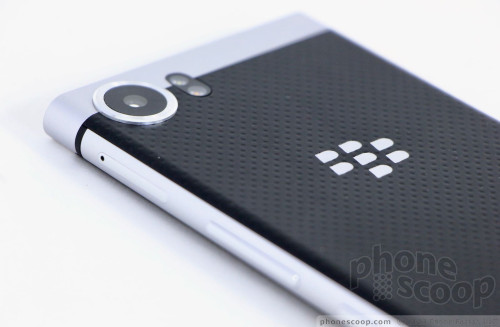
Screen
The display measures 4.5 inches across the diagonal and adopts a 3:2 aspect ratio. BlackBerry says the display offers "full HD" resolution, but that's a bit of a fib. In reality, the KEYone has 1,620 by 1,080 pixels, which makes it 300 vertical pixels shy of true Full HD. Nitpicking aside, the display is bright, sharp, and clean. On-screen elements are smooth and individual pixels are invisible. The LCD panel produces plenty of light, allowing the phone to be used indoors and out. Viewing angles are pretty good; there's both brightness drop and blue shift when the phone is tilted side-to-side, but the effect is minimal.
This isn't the best screen for watching HD movies. You can view video, of course, but the odd aspect ratio squishes content, especially stuff that's in a wide-angle format, such as a 2.35:1 movie.
You cannot use the KEYone as a tool for exploring virtual worlds. The keyboard prevents it from working with even the simplest VR headsets, such as Google Cardboard.
Signal
TCL has two versions of the phone. The V1 model supports the majority of LTE Bands used by AT&T and T-Mobile, while the V2 model tosses in TDD-LTE 41 and CDMA 0, 1, and 10. Both versions will work on AT&T and T-Mobile, while the latter will be better suited to Sprint and Verizon Wireless. It's a shame neither version supports T-Mobile Band 66. BlackBerry sent me the unlocked V1 model and I tested it on AT&T and T-Mobile. I would call the KEYone's performance average.
The phone connected to both wireless networks' signals with no issue. It defaulted to 4G most of the time, but I saw it drop down to 3.5G in weak signal areas on T-Mobile's network (this is typical). The KEYone's ability to connect calls is not in question. The phone didn't give me any trouble patching through on the first dial. It did drop one call at highway speeds, but it didn't miss any.
The quickest download I saw on either network was 30 Mbps while the fastest upload was less than one-third that at 8 Mbps. The phone did post slightly faster peak speeds on T-Mobile than it did on AT&T, but speeds were more consistent across the board on AT&T. This reflects my experience with many other phones, which means the KEYone does as well as it can. Streaming media (Spotify, YouTube) via LTE was acceptable with only minor amounts of stopping and buffering. Normal activities such as checking email and social networks never gave the KEYone's LTE radio any trouble.
Sound
TCL put together a fine voice phone in the KEYone. Calls made normally via the earpiece were crystal clear. Voices sounded warm and present during calls. Clarity was very, very good, but I wish the earpiece produced just a bit more volume. I could hear it in all but the noisiest spaces. Those I spoke to through the KEYone said I was "very clear" to their ears.
The speakerphone isn't quite as good. If you're in a quiet space such as room or office with the door closed, you'll enjoy reasonably clear calls at acceptable volumes. Even a modest amount of noise will force you to raise the volume and therein introduce a small amount of speaker distortion. You can hear calls in a moving car, but it's not easy.
Ringers and alerts are reasonably loud, but not as loud as I'd like. The vibrate alert is very good.
Battery
One place the KEYone excels is battery life. TCL crammed in a 3,505 mAh battery and it delivers. I consistently found the battery pushing through two full days, and sometimes it crawled its way into a third. As always, I tested the phone with all the radios on and the brightness set to 50%. We can likely thank the smaller screen and mid-range processor for the phone's power proficiency. The KEYone outlasts nearly all of today's top handsets, hands down.
Last, the KEYone includes Boost Mode, which is more about charging than it is about conserving battery. With Boost Mode enabled, the phone will use as little power as possible as it charges, thereby allowing it to charge more swiftly. This is how BlackBerry gets away with saying the phone can ingest half its capacity — about 1,750 mAh — in just 30 minutes using the included charger.
The phone doesn't support wireless charging.
Bluetooth, GPS, NFC, WiFi
With Bluetooth 4.2 aboard, the KEYone paired and connected with headphones, speakers, and other accessories with minimal impact to battery life. I was pleased with calls made via Bluetooth headphones. Just as with the earpiece, clarity was good and volume was good enough. Calls patched through my car's hands-free system were acceptable in terms of clarity and volume. Music sounded okay when used with stereo headphones, but I wasn't blown away.
GPS worked just fine on the KEYone. In Google Maps, the blue dot always showed up right away and was never more than 15 to 20 feet from my real location. The app ran swiftly over LTE. I found the KEYone to be a fine real-time navigation tool.
The NFC radio was helpful in pairing with some Bluetooth accessories and also supports Android Pay for mobile payments.
The WiFi functioned well enough.
Software
Lock Screen
Many of today's best phones include a version of an "always-on display" that provides useful notification data as it arrives and the KEYone is no different.
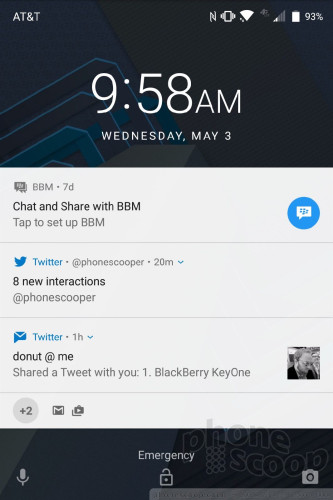
The KEYone's screen briefly turns on when new emails, messages, or BBMs arrive. Rather than wake the display fully, however, it makes use of white text on the black screen in order to keep power drain to a minimum. The KEYone will show the latest notifications and the clock on the display for about 5 seconds before blinking off again. You can double tap the display to recall the notification screen any time.
The KEYone gives owners complete control over notifications. For example, you can see who sent the email/message, the subject line and/or first line on the lock screen. You may also choose more basic, badge-style notifications that don't include such sensitive details. Alternately, you can turn off most notifications entirely.
If you press the screen lock button, the screen wakes fully and shows much the same information. The KEYone will let you open the Quick Settings shade without requiring your passcode, and of course you can access the camera and Google Assistant thanks to shortcuts in the bottom corners.
On the security front, the KEYone includes a fingerprint reader in the space bar of the keyboard. It's as easy to set up as any other fingerprint reader. I found it to be accurate and speedy. You'll need to set up an alternate lock, such as a PIN, pattern, or password. The fingerprint reader is easily the quickest way to unlock the phone.
Home Screens
The KEYone relies on BlackBerry's "hardened" version of Android 7.1 Nougat. It looks a lot like stock Nougat, but there are a gobs of BlackBerry apps, services, and UI tweaks aboard.
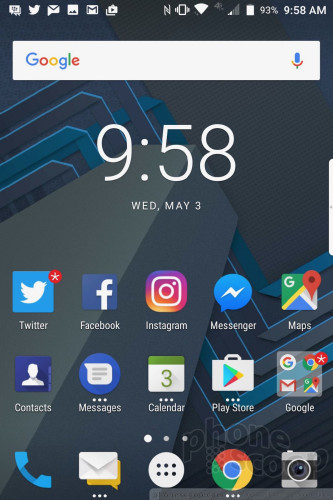
The home screen experience is hardly different from that of a Nexus or Pixel phone. The app drawer, drop down Quick Settings panel, and full system settings menus are completely stock Android. This is all good news.
You can choose to ignore or take full advantage of BlackBerry's custom software and tools. First up, the Productivity Tab. The Tab functions a lot like the Edge UX on Samsung smartphones. The Tab is accessed through a thin sliver of a tab that appears along the edge of the screen. The tab is available from within most apps. You can set the Tab to appear on the left or right side, control how tall it is, and adjust the level of transparency. The tab offers a quick productivity dashboard, including your schedule, messages, tasks, and favorite contacts. If you don't find the Tab useful, you can turn it off.
BlackBerry has its own version of widgets for certain apps. The idea of these “hidden widgets” is to protect sensitive information while still allowing people to view dynamic widget content. Apps that support these widgets are signified with three small dots under the shortcut on the home screen. Swipe up on the shortcut, and the corresponding widget will open, allowing users to see their next calendar appointment, most recent text message, or browser shortcuts. Of course, all the standard Android widgets are also available. The hidden widgets play a bit on the probability that someone who gains unauthorized access to the KEYone won't know how to use them. They also protect you from someone looking over your shoulder, etc.
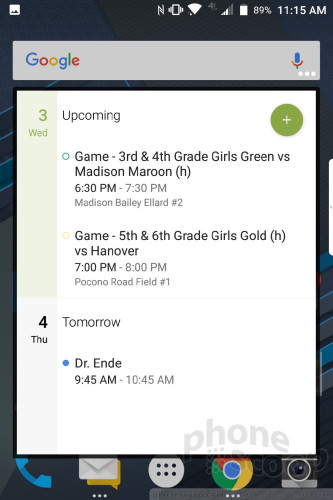
As noted earlier, users can assign the convenience key to perform certain actions. For example, you can elect to have the convenience key open a specific app, speed dial a contact, send a message, and so on. The UI to configure this option is a cinch to use.
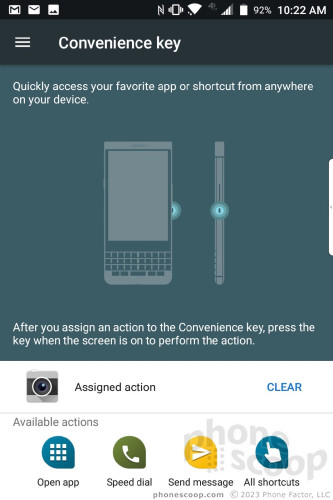
BlackBerrys have long supported keyboard-based shortcuts and the KEYone offers plenty of functionality in that respect.
First, the keyboard acts as a trackpad and allows you to swipe through home screens and scroll through apps. Gently slide your thumb up or down, or side to side to interact with apps that support scrolling.
The keyboard also offers an insane number of shortcuts. For example, a long-press of the T button opens the tasks app, a long press of the B button opens the browser, and so on. Some keys are locked into specific shortcuts, but a good number of the keys can be customized to do what you want.
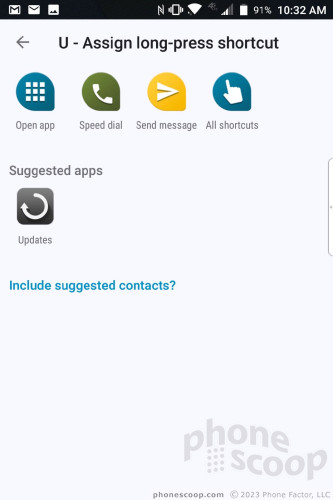
With a Snapdragon 625 and 3 GB of RAM under the hood, the KEYone has plenty of power. The phone never felt slow or sluggish. Core tasks, such as email, messaging, and social networking, all ran smoothly. The KEYone has a capable processor.
BlackBerry Apps
Beyond the custom home screen tools, there are some serious BlackBerry apps and services aboard the KEYone that warrant discussion. These are what truly define modern BlackBerries, especially considering that BlackBerry is now a software company and not a hardware company.
BlackBerry Hub is the most significant BlackBerry feature of the KEYone. This app was carried over from the defunct BlackBerry 10 OS and serves as a master inbox for managing all sorts of communications. BlackBerry Hub lets users drill down into their call log, SMS inbox, BBM account, email, Facebook, Instagram, Twitter, and more, in more depth. Users can snooze notifications for individual accounts, sort between unread, flagged, muted, and high-importance conversations, and tweak behaviors until you're blue in the face. The Hub offers an extensive number of settings for creating custom alerts, as well as prioritizing inbound messages and fine-tuning the exact appearance of emails.
The search tool built into Hub is particularly powerful when it comes to sorting through messages. For example, let's say someone sent you the address for a meeting, but you can't remember if the address was shared via email, SMS, BBM, or another app. The search tool will find it no matter which messaging app the address is hiding in.
The one thing I don't like about the Hub is that it duplicates everything. Let's say you get a new SMS. The SMS app will notify you, and so will the Hub. Same goes for Gmail and all your social media accounts. It takes some time to adjust the way Hub and the individual apps push notifications to eliminate duplicates.
For power users who want absolutely every communication tool accessible in a single place, BlackBerry Hub has you covered.
Then there's BBM. BBM is BlackBerry's legacy messaging service. The app is robust and includes a ridiculous number of features, such as read receipts, stickers, emoji, voice/video calls, and so on.
Lastly, there's DTEK. DTEK assesses the KEYone's security settings and lets you know if you need to take additional steps to secure the handset. For example, before I set a screen lock for the phone it returned a result of "inadequate". Once I added the lock, the device's security status improved to "fair". BlackBerry thought my pattern was too weak. Using a more complex pattern — or a fingerprint — put the KEYone's security status in the "excellent" range. DTEK is most useful for people not very security-minded. As long as you have a decently strong password protecting the phone, you've done enough. Businesses that adopt the KEYone will know to enforce security through their BlackBerry admin console, making DTEK on the handset itself redundant in most cases.
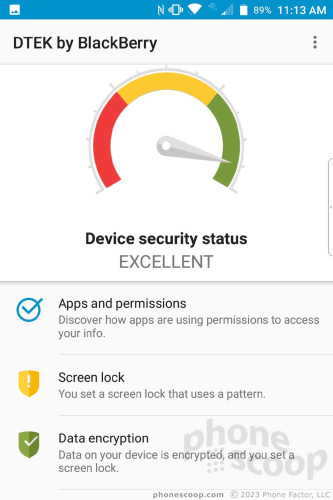
It's worth pointing out that some of these tools are available to non-BlackBerries. Hub and BBM, for example, are compatible with most Android handsets, while BBM is also available to the iPhone.
Camera
The KEYone does not have a dedicated camera button, but you can choose to assign the convenience key to launch the camera. Stupidly, the convenience key only works when the phone is already awake and unlocked. (C'mon TCL, you can do better than this.) You may alternately open the camera from the lock screen shortcut. Better yet, a double-press of the lock screen button will launch the camera when the phone is locked.
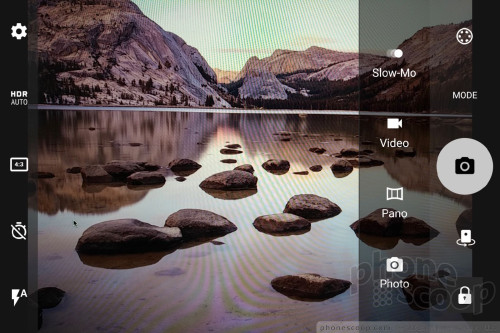
The camera app is rather limited in terms of tools and functionality. Basic settings line either side of the viewfinder. On the left you'll find controls for the flash and HDR — both of which have “auto” settings — as well as the timer and full settings. On the right, you can switch shooting modes (camera, panorama, video, slow-motion) and apply filters (sepia, B&W, etc.) A slider tool near the shutter button lets you adjust exposure (brightness) on the fly.
The shooting modes are straightforward and boring. They work as expected, but there's nothing fun about them.
The settings don't let you do much. For example, you can choose from several aspect ratios, but not photo resolution. You'll get the full pixel count if you use the 4:3 aspect ratio, but the 3:2 and 16:9 settings crop the the image to achieve the ratio. The KEYone does allow you to tweak the video capture resolution and frame rate.
The KEYone's Snapdragon 625 is more than up to the task of running the camera smoothly. I didn't experience any performance issues while testing the camera app.
Photos/Video
The main camera makes use of the 12-megapixel IMX378 sensor from Sony with large pixels, f/2.0 aperture, and PDAF. BlackBerry's software is able to put the sensor to good use. I found the majority of images to be very good with only a few real stinkers. The KEYone does a fine job with focus, exposure, and white balance. The phone does seem to have issues focusing up close (see purple flower), but most every other shot I took was sharp. Exposure is almost always excellent. The phone defaults to HDR Auto and I suggest leaving it that way, as it doesn't appear to impact camera speed. The KEYone takes good pictures.
The user-facing camera snags 8-megapixel images with an 84-degree field of view and does a decent job. Most selfies I captured showed proper focus, white balance, and exposure. The only downside is grain, which you'll notice when shooting in low light.
The phone can shoot video at max resolution of 4K and allows people to choose from a variety of frame rates. I was generally pleased with the results, which showed good focus, color, and exposure. The KEYone produces fine video.
I'd say most people will be happy to use the KEYone for everyday photo and video needs. It can handle most ordinary shooting environments. I might use dedicated gear for the most important events, but the KEYone impresses just the same.
Wrap-Up
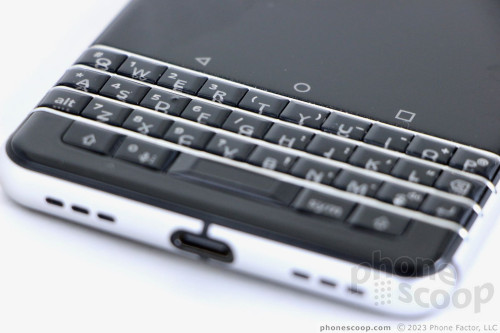
The BlackBerry KEYone is a fine phone, but it's not for everyone. TCL and BlackBerry managed to create a solid piece of hardware that banks a bit on the nostalgia factor while offering modern conveniences at the same time.
As far as the form factor is concerned, there's plenty to like about the KEYone's aluminum build, excellent keyboard, and professional looks. I wish the phone were a bit slimmer, and yet the device combines a decent-sized touchscreen with QWERTY keys in a handset that's competitively sized and comfortable to hold and use. Core performance metrics are all on point. The display is decent, signal and voice quality are very good, and battery performance is excellent.
BlackBerry did a respectable job tweaking Google's Android platform in ways the benefit the end user. For example, it left basic home screen and settings tools alone and added business-friendly functions such as BlackBerry Hub. Toss in BlackBerry's keyboard shortcuts, Productivity Tab, and the unique protected widgets, and you have plenty of ways to access and manage your communications. The camera app may be spartan, but it delivers good results.
The KEYone is not for multimedia lovers. The smaller display simply isn't ideal for watching videos and negates the phone's ability to support VR entirely. Moreover, if you prefer swiping on glass to pressing physical keys then there's no reason to regress to the KEYone.
People who value physical keys, strong security options, and powerful messaging tools will find plenty to like in the BlackBerry KEYone. The company is selling the phone unlocked directly to consumers beginning May 31. The phone costs $549. The KEYone is no fancy flagship; instead, it's the workhorse that many of today's professionals still need to power through their day.
Comments
No messages


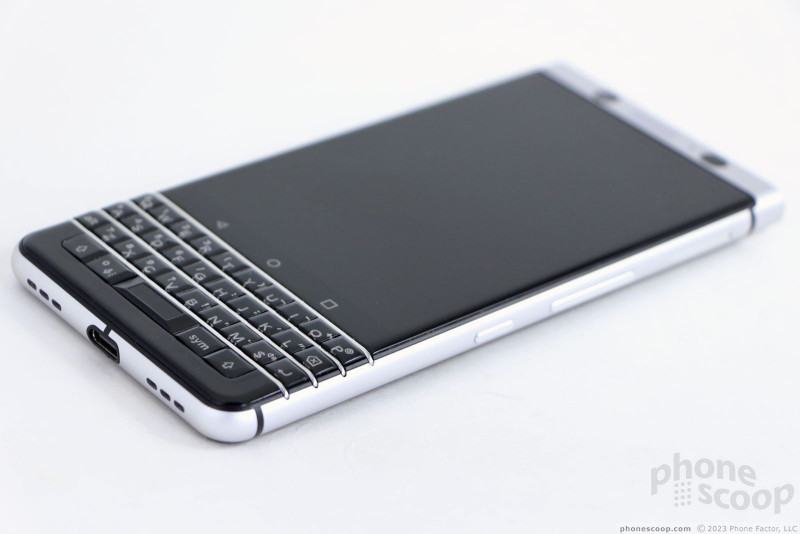





















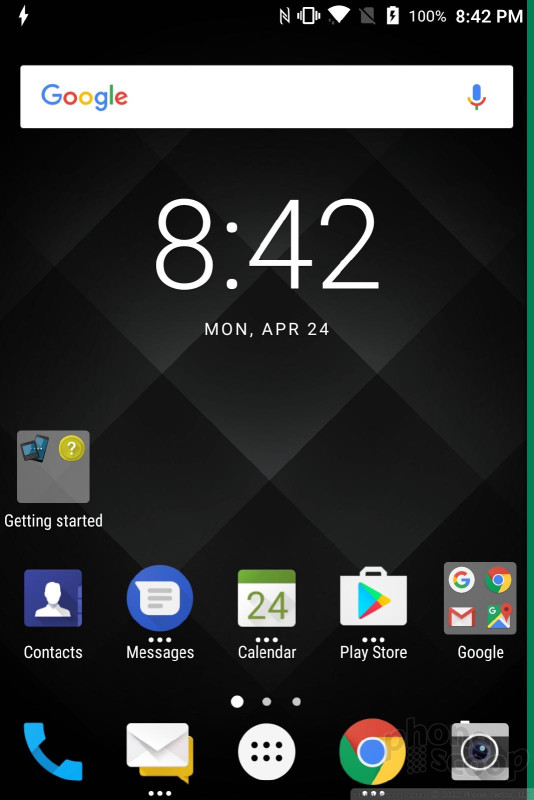












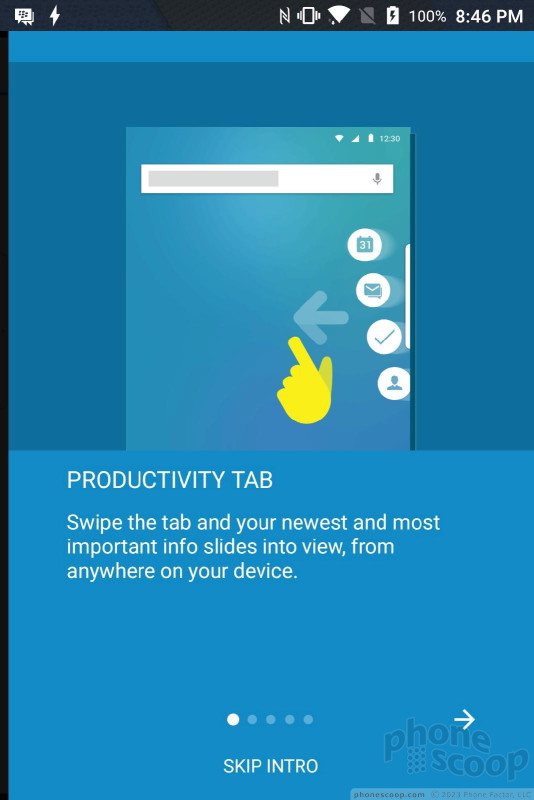







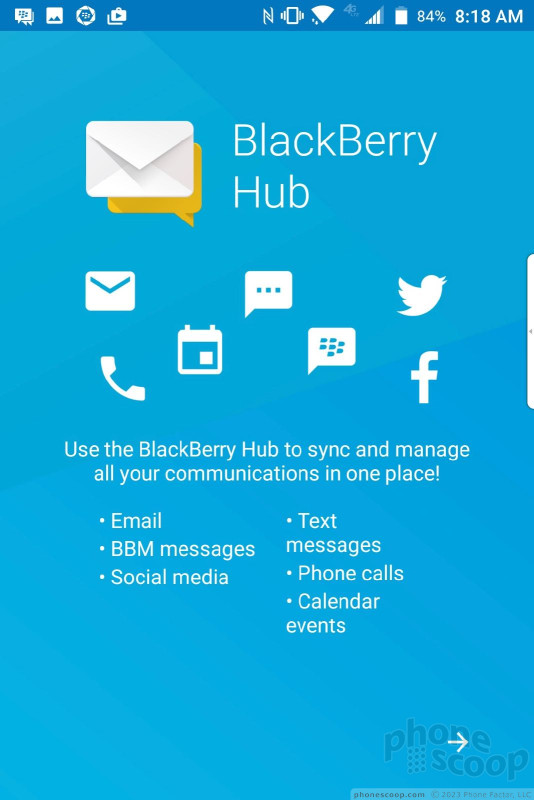





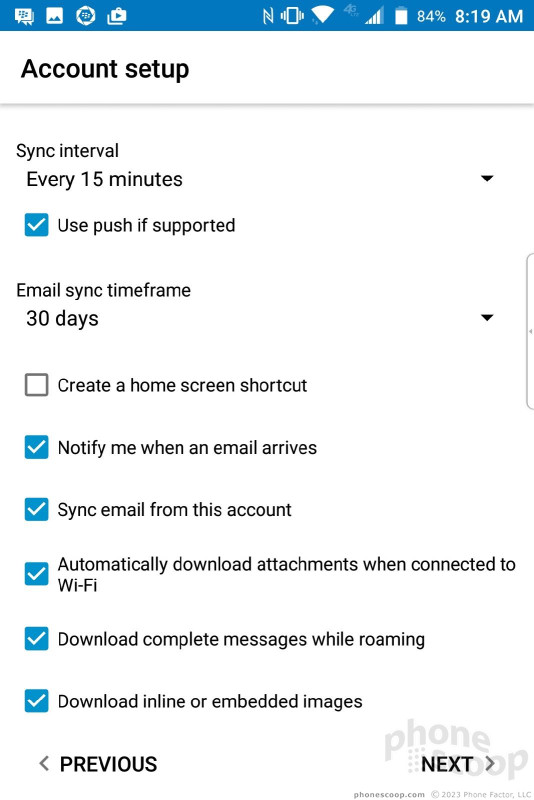










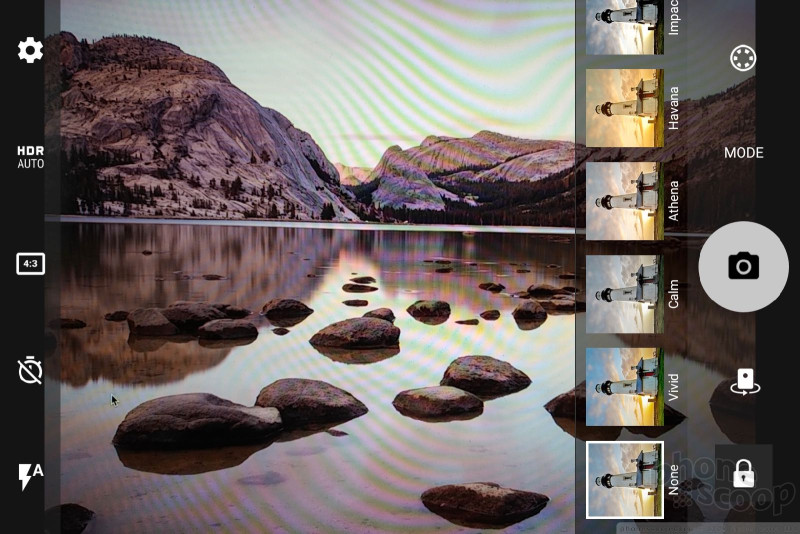






















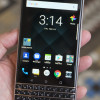 Hands On with the BlackBerry KEYone
Hands On with the BlackBerry KEYone
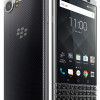 TCL Reveals the BlackBerry KEYone Smartphone
TCL Reveals the BlackBerry KEYone Smartphone
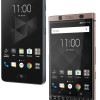 TCL Promises Two New QWERTY BlackBerries as Motion Hits U.S. Stores Jan. 12
TCL Promises Two New QWERTY BlackBerries as Motion Hits U.S. Stores Jan. 12
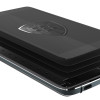 BlackBerry to Cease Monthly Updates for the Priv, Launch Trade-Up Program
BlackBerry to Cease Monthly Updates for the Priv, Launch Trade-Up Program
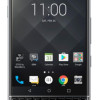 BlackBerry KEYone $100 Off from Amazon and Best Buy
BlackBerry KEYone $100 Off from Amazon and Best Buy
 BlackBerry KEYone
BlackBerry KEYone








